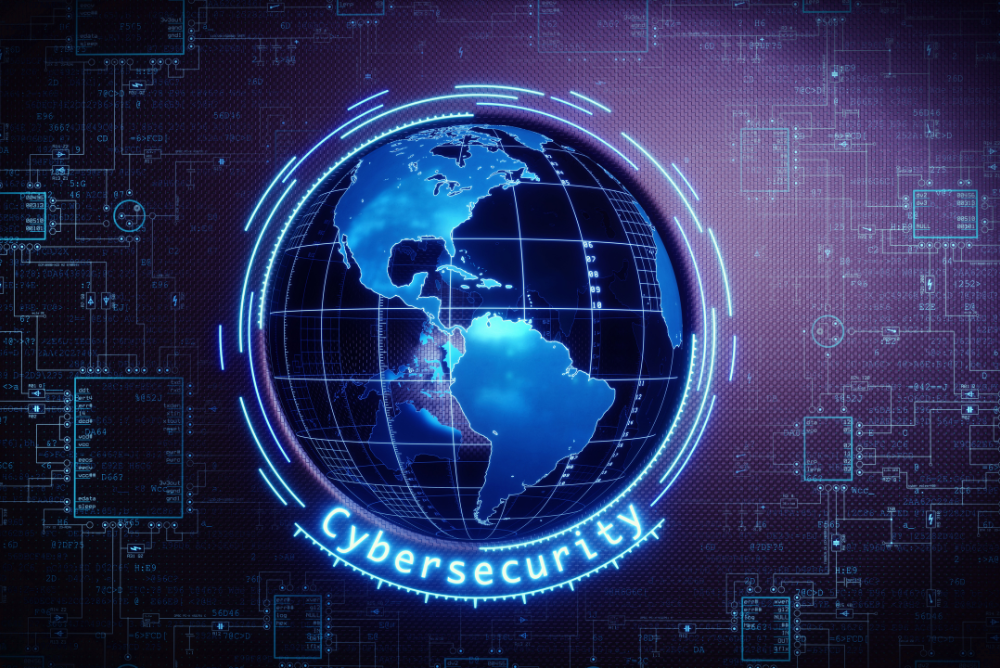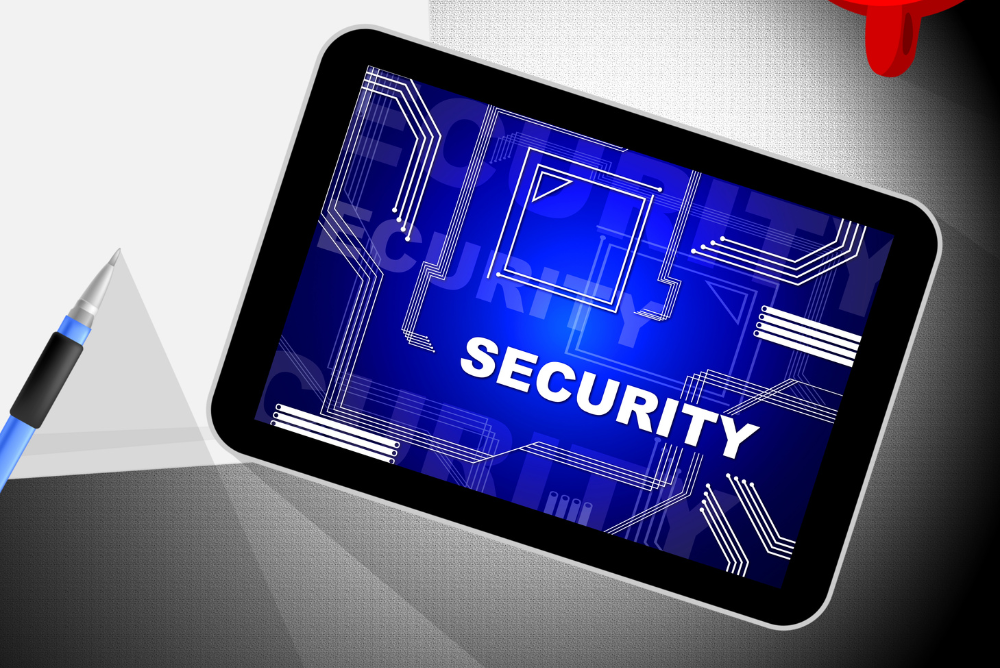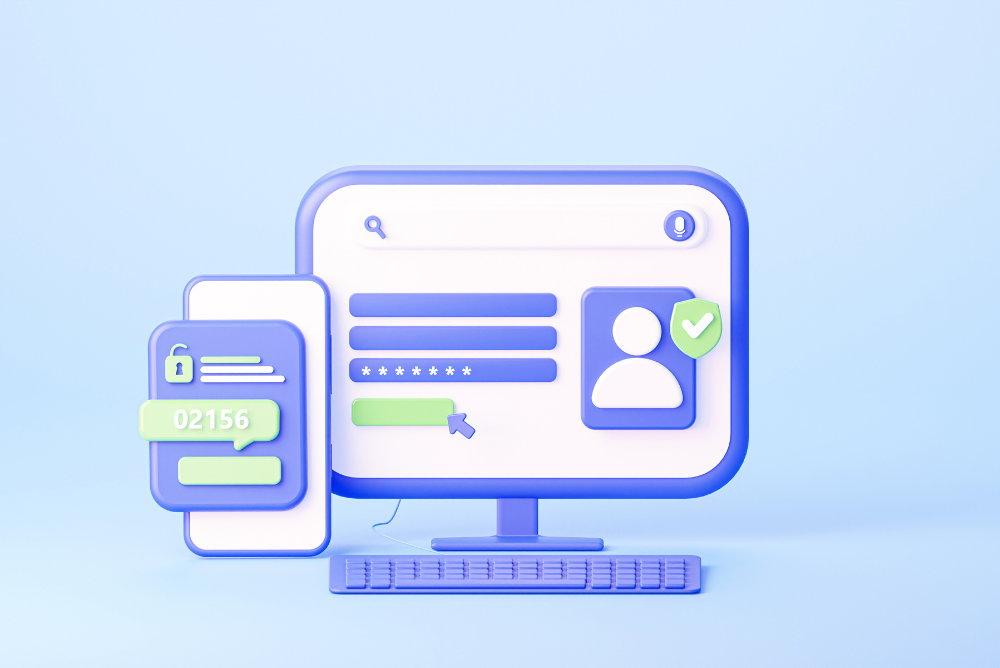11 CYBERSECURITY FRAMEWORKS TO HELP YOUR BUSINESS

Are you tired of worrying about the safety of your business’s sensitive information?
Look no further! In this blog, we dive into the top cybersecurity frameworks that will give you the peace of mind you need to focus on running your business.
From understanding the basics of risk management to implementing industry-specific standards, we’ve got you covered.
Get ready to fortify your defenses and protect your business against cyber threats. It’s time to take control of your cybersecurity and secure your business for the digital age.
Basics of Risk Management
Risk management is a crucial aspect of cybersecurity. It involves identifying, assessing, and prioritizing potential risks to an organization’s information and systems, and then implementing measures to mitigate or eliminate those risks.
The basic steps of risk management include:
- Risk Identification: This is the process of identifying potential threats to an organization’s information and systems. This can be done through various methods such as interviews, questionnaires, and vulnerability assessments.
- Risk Assessment: Once potential risks have been identified, they must be assessed in terms of their likelihood and impact. This step involves evaluating the likelihood of a risk occurring and the potential impact it could have on the organization.
- Risk Prioritization: Based on the assessment, risks must be prioritized. This step helps to determine which risks should be addressed first and which can be deferred.
- Risk Mitigation: After prioritizing risks, the next step is to implement measures to mitigate or eliminate them. This can include implementing security controls, creating incident response plans, and providing employee training.
- Risk Monitoring: It is important to monitor the effectiveness of the risk management program and make changes as needed. This step involves continuously monitoring and assessing the environment for new risks and re-evaluating the existing ones.
Risk management is an ongoing process that must be integrated into the overall security strategy of an organization. By following these basic steps, organizations can effectively identify, assess, and prioritize potential risks, and implement measures to mitigate or eliminate them.
Cybersecurity Frameworks to Help Your Business Reduce Cyber Risk
There are several cybersecurity frameworks that can help businesses protect their sensitive information and systems from cyber threats. Some of the most widely used frameworks include:
Cyber Essentials
Cyber Essentials is a UK government-backed certification scheme that was launched in 2014.
It is designed to help organizations of all sizes protect against common cyber threats such as hacking, phishing, and malware.
The scheme is voluntary, and it has been designed to be simple and straightforward to implement.
The Cyber Essentials scheme consists of a self-assessment questionnaire that organizations complete to demonstrate that they have implemented certain security controls. The questionnaire covers five key technical security controls:
- Secure configuration: This covers the configuration of systems and software to minimize vulnerabilities and reduce the risk of compromise.
- Boundary firewalls and internet gateways: This covers the protection of an organization’s networks and systems from unauthorized access from the internet.
- Access control: This covers the management of users, their privileges, and the resources they can access.
- Malware protection: This covers the protection of systems and networks from malware, including viruses, Trojan horses, and other malicious software.
- Patch management: This covers the process of identifying, testing, and applying software updates to fix known vulnerabilities.
Organizations that pass the self-assessment questionnaire are awarded a Cyber Essentials certificate, which is valid for one year.
The scheme also includes an additional certification, Cyber Essentials Plus, that involves an external, independent assessment of an organization’s security controls.
The Cyber Essentials scheme is designed to align with other international standards such as ISO 27001, PCI DSS, and NIST Cybersecurity Framework.
It is becoming increasingly important for organizations to have cybersecurity certification in order to protect their business and to win contracts, as more and more companies are requiring their suppliers to have Cyber Essentials certification.

ISO 27001 / 27002
ISO 27001 is an international standard that outlines a best-practice framework for managing sensitive information.
It specifies a set of security controls that organizations can implement to protect the confidentiality, integrity, and availability of their information.
The standard is divided into two parts: the first part provides the overall requirements for an information security management system (ISMS), while the second part provides a code of practice for information security management.
The ISMS framework outlined in ISO 27001 is based on a risk management approach, which involves identifying and assessing the risks to the organization’s information assets, and then implementing controls to treat those risks.
The standard includes 14 sections that cover different areas of information security, such as:
- Security management
- Asset management
- Human resources security
- Physical and environmental security
- Communications and operations management
- Access control
- Information systems acquisition, development and maintenance
- Information security incident management
- Business continuity management
ISO 27001 is a widely recognized standard and it is intended to be applied to any organization regardless of its size, nature, or geographical location.
Organizations that implement and are certified to the standard are demonstrating their commitment to information security and their ability to manage sensitive information effectively.
Implementing an ISMS based on ISO 27001 requires a significant investment in terms of time and resources, but it can also bring significant benefits such as improved security, reduced costs, and improved regulatory compliance.
Many organizations use ISO 27001 as a framework for compliance with other security standards such as HIPAA, SOC 2, and PCI DSS.
ISO 27002 is an international standard that provides guidelines and general principles for initiating, implementing, maintaining, and improving information security management in an organization.
It is also known as ISO/IEC 27002:2013 or simply as the “Code of practice for information security management.”
It provides a code of practice for information security management and it is intended to be used in conjunction with ISO 27001.
The standard provides a comprehensive framework of best practices for information security management, including guidelines and general principles on the management of information security risks.
It covers a wide range of topics such as:
- Security policy
- Organizational security
- Asset management
- Human resources security
- Physical and environmental security
- Communications and operations management
- Access control
- Information systems acquisition, development, and maintenance
- Information security incident management
- Business continuity management
- Compliance
ISO 27002 is intended to be used by organizations of all sizes and types, and it can be applied to any type of information system, including those in the field of information technology, business, and government.
The standard provides a flexible framework that allows organizations to adopt the controls that are most appropriate for their specific needs, and it can be used as a basis for compliance with other information security standards and regulations.
Implementing a management system based on ISO 27002 requires a significant investment in terms of time and resources, but it can also bring significant benefits such as improved security, reduced costs, and improved regulatory compliance.
Organizations that comply with the standard are demonstrating their commitment to information security and their ability to manage sensitive information effectively.
PCI-DSS
The Payment Card Industry Data Security Standard (PCI-DSS) is a set of security standards designed to ensure that all companies that accept, process, store or transmit credit card information maintain a secure environment.
These standards were created by major credit card companies such as Visa, MasterCard, American Express, JCB International and Discover Financial Service to help protect against credit card fraud.
The PCI-DSS standards are divided into six categories, or “control objectives,” which are:
- Build and Maintain a Secure Network: This includes requirements for firewalls, network segmentation, and other security measures to protect cardholder data.
- Protect Cardholder Data: This includes requirements for encrypting sensitive data and protecting it from unauthorized access.
- Maintain a Vulnerability Management Program: This includes requirements for regular testing and scanning of systems and applications to identify vulnerabilities.
- Implement Strong Access Control Measures: This includes requirements for secure user authentication, secure access controls and monitoring of access to cardholder data.
- Regularly Monitor and Test Networks: This includes requirements for regular testing and monitoring of networks and systems to detect and respond to security incidents.
- Maintain an Information Security Policy: This includes requirements for creating and maintaining an information security policy that outlines the organization’s commitment to protecting cardholder data.
Organizations that process credit card payments are required to comply with the PCI-DSS standards, and are required to complete a Self-Assessment Questionnaire (SAQ) to demonstrate compliance.
Compliance with PCI-DSS can be achieved through annual on-site assessment or by passing a vulnerability scan by an Approved Scanning Vendor (ASV).
PCI-DSS is a widely recognized standard and it is intended to be applied to any organization that process credit card payment, regardless of its size, nature, or geographical location.
Organizations that implement and are certified to the standard are demonstrating their commitment to protect credit card information and their ability to secure sensitive information effectively.

NIST 800-53
NIST SP 800-53 is a publication from the National Institute of Standards and Technology (NIST) that provides a set of security controls and guidelines for federal information systems.
The publication is intended to be used as a basis for the development of security plans, security assessment procedures, and security-related policy and guidance.
The controls in NIST SP 800-53 are organized into 17 different families, each of which addresses a specific aspect of information security. These families are:
- Security and Privacy Management
- Access Control
- Awareness and Training
- Auditing and Accountability
- Certification, Accreditation, and Security Assessment
- Configuration Management
- Continuous Monitoring
- Identification and Authentication
- Incident Response
- Maintenance
- Media Protection
- Personnel Security
- Physical and Environmental Protection
- Risk Assessment
- Security Planning
- Systems and Communications Protection
- Systems and Information Integrity
Each family of controls includes a set of baseline controls that are considered essential for protecting information systems, as well as a set of derived controls that organizations can use to address more specific security needs.
Organizations can use the controls in NIST SP 800-53 as a basis for developing their own security plans and procedures, and can tailor the controls to meet their specific security needs.
NIST SP 800-53 is intended to be used by organizations that operate or use federal information
NIST Cyber Security Framework (CSF)
The NIST Cybersecurity Framework (CSF) is a framework developed by the National Institute of Standards and Technology (NIST) to help organizations manage cybersecurity risks.
The framework provides a common language and set of guidelines for managing cybersecurity risks, and is intended to be used by organizations of all sizes and in all sectors.
The framework is organized around five core functions: Identify, Protect, Detect, Respond, and Recover.
These functions are intended to provide a holistic view of an organization’s cybersecurity posture, and are designed to be flexible and adaptable to the specific needs of an organization.
- Identify: This function focuses on understanding the organization’s assets, vulnerabilities, and threats, and on developing a cybersecurity risk management program.
- Protect: This function focuses on implementing controls to prevent or mitigate the impact of a cybersecurity incident.
- Detect: This function focuses on detecting cybersecurity incidents in a timely manner, and on responding to them quickly and effectively.
- Respond: This function focuses on taking appropriate actions to contain and control the incident and to minimize the damage caused by the incident.
- Recover: This function focuses on restoring normal operations as quickly as possible following an incident, and on learning from the incident to improve future cybersecurity.
The NIST CSF includes a set of standards, guidelines, and best practices for each of the core functions, and it is intended to be used in conjunction with existing security standards and guidelines, such as ISO 27001 and NIST SP 800-53.
The NIST CSF is not a mandatory standard, but it has been widely adopted by organizations in the US and around the world as a best practice for managing cybersecurity risks.
The framework is highly adaptable and can be tailored to the specific needs of an organization, it can be integrated with existing security standards and it is easily measurable and verifiable.
Organizations that implement and are certified to the NIST CSF are demonstrating their commitment to protect their assets and their ability to secure sensitive information effectively.
CIS Critical Security Controls
The CIS Critical Security Controls (CSC) are a set of 20 security controls that are considered to be the most effective means of protecting against cyber threats.
These controls are developed and maintained by the Center for Internet Security (CIS) and are based on best practices and real-world experience.
The controls are intended to be easily implementable and measurable, and they are intended to be used by organizations of all sizes and in all sectors.
The 20 CIS Critical Security Controls are:
- Inventory of Authorized and Unauthorized Devices
- Inventory of Authorized and Unauthorized Software
- Secure Configurations for Hardware and Software on Mobile Devices, Laptops, Workstations, and Servers
- Continuous Vulnerability Management
- Controlled Use of Administrative Privileges
- Maintenance, Monitoring, and Analysis of Audit Logs
- Email and Web Browser Protections
- Malware Defenses
- Limitation and Control of Network Ports, Protocols, and Services
- Data Recovery Capability
- Secure Configurations for Network Devices such as Firewalls, Routers, and Switches
- Boundary Defense
- Data Protection
- Controlled Access Based on the Need to Know
- Wireless Access Control
- Account Monitoring and Control
- Security Skills Assessment and Appropriate Training to Fill Gaps
- Application Software Security
- Incident Response and Management
- Penetration Tests and Red Team Exercises
Each control is designed to address a specific area of risk and includes detailed guidance on how to implement the control, as well as metrics that organizations can use to measure their progress.
Organizations can use the CIS Critical Security Controls to assess their current security posture and to identify areas where they need to improve. The controls are intended to be used in conjunction with other security best practices and standards, such as ISO 27001 and NIST SP 800-53.

Cloud Security Alliance (CSA) Cloud Controls Matrix (CCM)
The Cloud Security Alliance (CSA) Cloud Controls Matrix (CCM) is a framework that helps organizations assess the security of cloud services and providers.
The CCM provides a set of security controls and best practices that organizations can use to evaluate the security of cloud services and providers.
The CCM is organized around the following domains:
- Governance and Enterprise Risk Management
- Compliance and Operational Security
- Information Security and Data Protection
- Application Security
- Incident Management and Forensics
Each domain covers a set of security controls and best practices that organizations can use to evaluate the security of cloud services and providers.
The CCM also includes a set of maturity indicators that organizations can use to assess the level of security of cloud services and providers. The CCM is designed to be used in conjunction with other security standards and frameworks such as ISO 27001, SOC2, and PCI-DSS.
The Cloud Security Alliance is a non-profit organization that provides guidance and best practices for securing cloud computing environments. The CSA is committed to providing organizations with the information and resources they need to make informed decisions about cloud security.
The CSA also provides training and certification programs to help organizations develop the skills and knowledge they need to effectively manage cloud security risks.
National Cyber Security Centre (NCSC) Cyber Assessment Framework (CAF)
The National Cyber Security Centre (NCSC) Cyber Assessment Framework (CAF) is a framework that helps organizations assess their cybersecurity posture and identify areas where they need to improve.
The CAF is developed and maintained by the NCSC, which is a part of the UK’s GCHQ (Government Communications Headquarters) and is the UK’s national technical authority for cyber security.
The CAF is divided into four main parts:
- Identify: This part helps organizations understand their cyber security risks and identify the assets that need to be protected.
- Protect: This part helps organizations put in place the necessary controls to protect their assets from cyber threats.
- Detect: This part helps organizations detect cyber security incidents and respond to them effectively.
- Recover: This part helps organizations recover from cyber security incidents and return to normal operations.
Each part of the CAF is divided into a set of activities that organizations can undertake to improve their cybersecurity posture. The framework also includes a set of maturity indicators that organizations can use to assess their progress in implementing the controls.
The CAF is designed to be flexible and adaptable to the needs of different organizations. It can be used by organizations of all sizes and in all sectors. It is intended to be used in conjunction with other security standards and frameworks such as ISO 27001 and the NIST Cybersecurity Framework.
The National Cyber Security Centre (NCSC) is the UK’s national technical authority for cyber security, it provides guidance, advice and support to organizations of all sizes and sectors to help them protect against cyber threats, and help them to improve their cyber security posture.
The NCSC also provides training and certification programs to help organizations develop the skills and knowledge they need to effectively manage cyber security risks.

The General Data Protection Regulation (GDPR)
The General Data Protection Regulation (GDPR) is a regulation in the European Union (EU) that regulates the handling of personal data. T
he GDPR replaces the 1995 Data Protection Directive and came into effect on May 25, 2018. It applies to all organizations that process personal data of EU citizens, regardless of where the organization is located.
The GDPR has several key provisions that organizations must comply with, including:
- Data protection by design and by default: Organizations must implement appropriate technical and organizational measures to ensure that personal data is processed securely.
- Right to access: Individuals have the right to access their personal data and organizations must provide this data in a clear and understandable format.
- Right to be forgotten: Individuals have the right to have their personal data erased under certain circumstances.
- Data portability: Individuals have the right to receive their personal data in a machine-readable format and transmit it to another organization.
- Data breach notification: Organizations must notify the relevant authorities and affected individuals of a data breach without undue delay, if it poses a high risk to the rights and freedoms of individuals.
- Privacy impact assessment: Organizations must conduct a privacy impact assessment before undertaking a new processing operation that is likely to result in a high risk to the rights and freedoms of individuals.
- Appointment of a Data Protection Officer: Organizations that engage in regular and systematic monitoring of individuals or that process sensitive personal data on a large scale, must appoint a Data Protection Officer.
Violations of the GDPR can result in fines of up to €20 million or 4% of the company’s global annual revenue, whichever is higher.
The General Data Protection Regulation (GDPR) is a regulation that regulates the handling of personal data in the European Union (EU) and is an important step in protecting the privacy rights of EU citizens.
It requires organizations to comply with several key provisions such as data protection by design and by default, right to access, right to be forgotten, data portability, data breach notification, privacy impact assessment and appointment of a Data Protection Officer.
Organizations that fail to comply with the GDPR may be subject to fines.
The Health Insurance Portability and Accountability Act (HIPAA)
The Health Insurance Portability and Accountability Act (HIPAA) is a federal law that was enacted in 1996 to protect the privacy and security of individuals’ health information.
It applies to all entities that handle personal health information, including health plans, healthcare providers, and healthcare clearinghouses.
HIPAA includes several key provisions that organizations must comply with, including:
- Privacy Rule: The Privacy Rule sets standards for protecting the privacy of personal health information and regulates the use and disclosure of this information. It requires organizations to have policies and procedures in place to protect personal health information and to provide individuals with notice of their rights regarding this information.
- Security Rule: The Security Rule sets standards for protecting the confidentiality, integrity, and availability of personal health information that is stored or transmitted electronically. It requires organizations to have security measures in place to protect this information, including access controls, audit trails, and incident response plans.
- Breach Notification Rule: The Breach Notification Rule requires organizations to notify individuals, the Department of Health and Human Services (HHS), and, in certain cases, the media, of any unauthorized access, use, or disclosure of personal health information.
- Omnibus Rule: The Omnibus Rule, which went into effect in 2013, clarified and strengthened HIPAA’s privacy and security rules. It also expanded the definition of a “business associate” to include any organization that handles personal health information on behalf of a covered entity.
Violations of HIPAA can result in civil or criminal penalties, including fines and imprisonment.
HIPAA (Health Insurance Portability and Accountability Act) is a federal law that protects the privacy and security of individuals’ health information.
It applies to all entities that handle personal health information and includes several key provisions such as Privacy rule, Security Rule, Breach Notification Rule, and Omnibus Rule.
Organizations that fail to comply with HIPAA may be subject to civil or criminal penalties, including fines and imprisonment. It is important to note that HIPAA is a U.S federal law, and if you are located outside of U.S, it may not be relevant.

SOC 2 (System and Organization Control)
SOC 2 (System and Organization Control) is a set of standards and guidelines established by the American Institute of Certified Public Accountants (AICPA) that organizations can use to assess and report on their internal controls related to security, availability, processing integrity, confidentiality, and privacy.
SOC 2 is intended to provide assurance to customers and other stakeholders that an organization has implemented appropriate controls to protect sensitive information and maintain business continuity.
There are two types of SOC 2 reports: Type 1 and Type 2.
- Type 1 Report: A Type 1 report focuses on the design and implementation of controls at a specific point in time. It provides assurance that an organization has implemented appropriate controls to meet the SOC 2 Trust Services Criteria.
- Type 2 Report: A Type 2 report focuses on the design and implementation of controls over a period of time. It provides assurance that the controls have been operating effectively over that period.
The SOC 2 report includes a detailed description of the organization’s controls, including their design, implementation, and testing. It also includes a detailed assessment of the controls’ effectiveness, including any exceptions or deviations that were identified during the testing.
The SOC 2 report is intended to be used by organizations that handle sensitive data, such as financial information, personal information, or confidential business information. Examples of such organizations include financial institutions, healthcare providers, and cloud service providers.
Conclusion
Cybersecurity is a vital concern for businesses of all sizes and industries. Implementing a cybersecurity framework is a crucial step in protecting sensitive information and systems from cyber threats.
By following the guidelines provided by frameworks such as NIST Cybersecurity Framework, ISO 27001, COBIT, PCI DSS and SOC 2, businesses can fortify their defenses and ensure that they have the necessary controls in place to protect against cyber threats.
It’s important to remember that cybersecurity is not a one-time event, but an ongoing process that requires continuous monitoring and updating.
By staying vigilant and keeping abreast of the latest threats and technologies, businesses can protect themselves and their customers from the ever-evolving threat of cyber attacks.
Are you a start-up or SME looking to protect your business from cyber threats? Look no further! Cyb-Uranus is here to help. Our team of experts specializes in assisting start-ups and SMEs in developing a sufficient and suitable cyber security program.
We believe that cyber security leadership should not be exclusive to large enterprises, but should be accessible to businesses of all sizes. Don’t let the fear of cyber attacks hold your business back.
Take control of your cyber security today and reach out to Cyb-Uranus for a consultation. Your business’s security is our top priority, and we’re here to guide you every step of the way. Don’t wait, contact Cyb-Uranus now and secure your business for the digital age!

